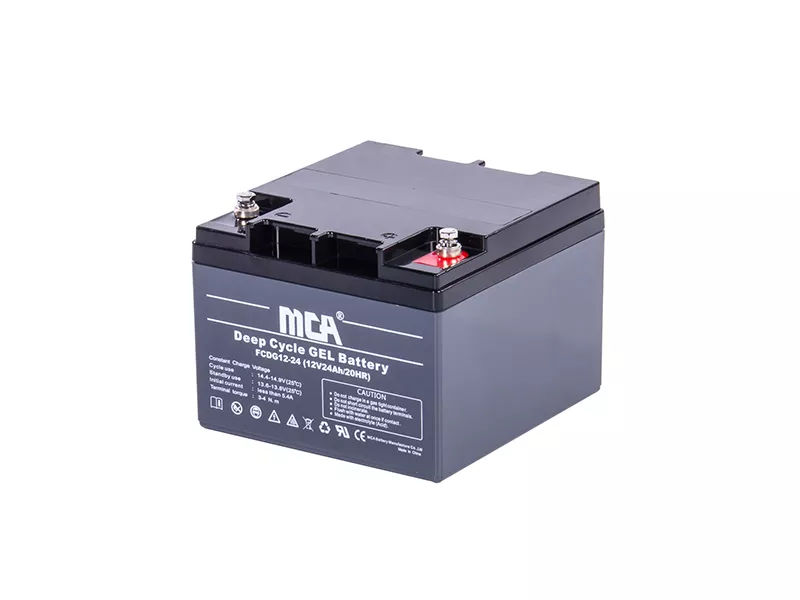I. Types of deep-cycle lead-acid batteries
The structuraldifference between deep-cycle and starter lead-acid batteries lies in the lead-cell pole plates. Deep cycle battery plates have thicker active plates with higher density active paste and thicker diaphragms. The alloy used for deep cycle battery plates may contain more antimony than starter batteries. Thicker battery pole plates may resist corrosion by extending charge and discharge cycles. The
deep-cycle lead-acid batteries are typically divided into two distinct categories; flooded (FLA) and valve-regulated lead-acid (VRLA), with the VRLA type being further subdivided into the absorbing glassmat (AGM) and the geltwotypes}. The enhancement of the absorbent glass mat spacer helps to minimize damage caused by spillage and vibration. In addition, liquid-rich deep-cycle batteries can be categorized into subcategories of tubular plated Opz or flat-plate plated. This difference typically affects the cycle life and performance of the battery.
The term "flooded" is used because this type of battery contains a certain amount of electrolyte, so the plates are completely submerged. The electrolyte level should be above the top of the plates to act as a reservoir to ensure that water loss during charging does not lower the level below the top of the plates and cause damage. Liquid-rich batteries break down some of the water from the electrolyte during charging, so regular maintenanceon liquid-rich batteries requires checking the electrolyte level and adding water. The primary failure modes of deep cycle batteries are loss of active material due to pole plate detachment, and corrosion of the internal gate that supports the active material. The capacity of deep cycle batteries is typically limited by the electrolyte capacity rather than the quality of the pole plates to improve life expectancy.
II. Technology
While still much more expensive than conventional lead-acid batteries, various rechargeable batterytechnologies, such as lithium-ion, are of great interest to many54}} usersare becoming increasingly attractive.

Thirdly, the application of deep-cycle batteries
in the retrofitting of electric boats. deep-cycle batteries in a conversion.
cathodic protection, which may include marine uses
other offshore uses, especially on sailing vessels lacking power generation capabilities, often smaller vessels
92}}
for trolling on recreational fishing boatsmotors
industrialelectricforkliftsand sweepers
Electric wheelchairs
for off-grid energy storagesystems} for solaror windenergy, especially in small installations in a singlebuildingor RV}.
power source for remote site instruments or equipment
recreational vehicle
traction batteries for use in driving motorizedvehicles, for example, golf carts and golf carts. 136golf cartsand other high-speed public road electric vehicles
transportationcommunicationnumbering
uninterruptible power supply (&$s39;UPS&$s39;), typically used for computersand related equipment, but also sewage pumps
audio equipment, is similar to a UPS but is also used in certain "Clean power" equipment provides clean DC power isolated from the mains, which is used to invert to AC power to xxx maximize the reproduction of audio signals